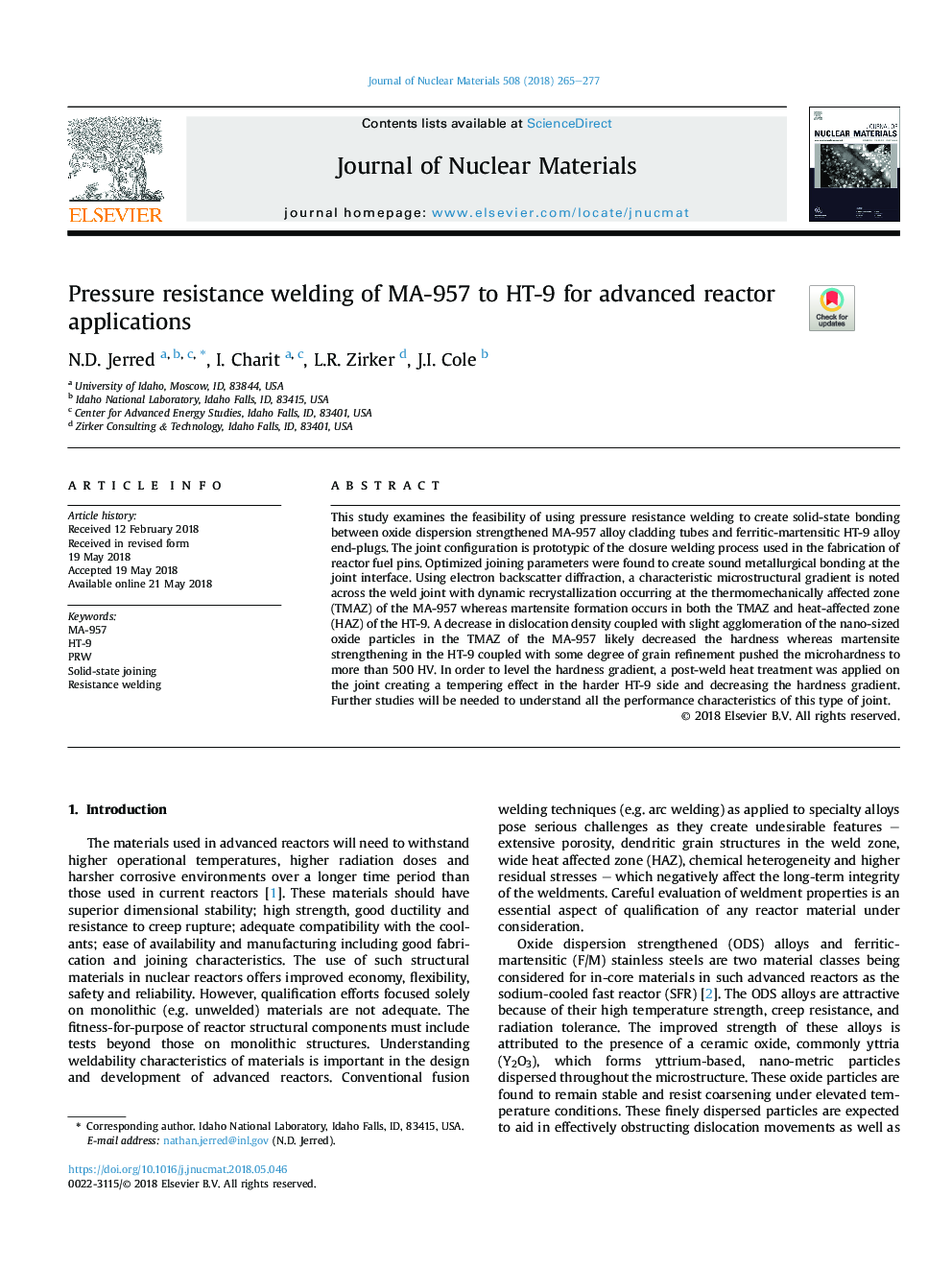| Article ID | Journal | Published Year | Pages | File Type |
|---|---|---|---|---|
| 7962962 | Journal of Nuclear Materials | 2018 | 13 Pages |
Abstract
This study examines the feasibility of using pressure resistance welding to create solid-state bonding between oxide dispersion strengthened MA-957 alloy cladding tubes and ferritic-martensitic HT-9 alloy end-plugs. The joint configuration is prototypic of the closure welding process used in the fabrication of reactor fuel pins. Optimized joining parameters were found to create sound metallurgical bonding at the joint interface. Using electron backscatter diffraction, a characteristic microstructural gradient is noted across the weld joint with dynamic recrystallization occurring at the thermomechanically affected zone (TMAZ) of the MA-957 whereas martensite formation occurs in both the TMAZ and heat-affected zone (HAZ) of the HT-9. A decrease in dislocation density coupled with slight agglomeration of the nano-sized oxide particles in the TMAZ of the MA-957 likely decreased the hardness whereas martensite strengthening in the HT-9 coupled with some degree of grain refinement pushed the microhardness to more than 500 HV. In order to level the hardness gradient, a post-weld heat treatment was applied on the joint creating a tempering effect in the harder HT-9 side and decreasing the hardness gradient. Further studies will be needed to understand all the performance characteristics of this type of joint.
Related Topics
Physical Sciences and Engineering
Energy
Nuclear Energy and Engineering
Authors
N.D. Jerred, I. Charit, L.R. Zirker, J.I. Cole,
